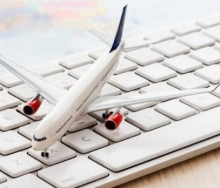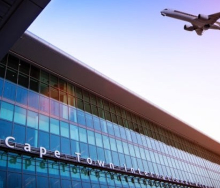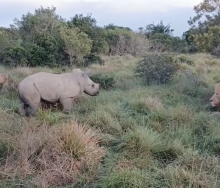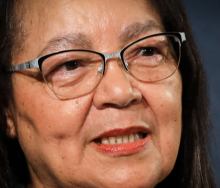THE high rate of failure for new
airlines entering the SA aviation
space has made it difficult for
emerging entrants to gain credibility
and the trust of local consumers.
Speaking at the recent GBTA
workshop in Pretoria, Fly Blue
Crane cco, Theunis Potgieter, said
despite their ambition, many failed
new entrants made the mistake of
underestimating just how difficult it
is to enter the market and this has
tainted people’s perceptions. “The
barriers to entry are high as you have
to pay upfront for fuel, Acsa fees
and aircraft.” He added that airlines
should factor in an investment period
of about three years before they
should expect to start to turn a profit.
Theunis added that many new
airlines made the mistake of trying to
compete on the 10th busiest route in
the world, Johannesburg-Cape Town.
He said that, instead, Fly Blue Crane
had opted to focus on routes with
higher margins, while dealing with the
right distribution partners, proving
their proposition would be a key part
of their future strategy. “People are
starting to ask questions about who
is behind new brands in the aviation
sector – and in our case we have a
lot of people who have been in the
industry for a long time.”
Richard Bodin, cco of fastjet, agreed
and said that while SA was one of the
most attractive destinations in Africa,
its aviation sector “has a catalogue
of spectacular failures”. He said the
country’s limit of no more than 25%
foreign ownership of airlines was also
a barrier to entry.
“As a relatively new airline and a
low-cost carrier, fastjet is very focused
on stimulating demand. While we
are growing, we are keeping fares
low at this point to generate interest
in demand in recognition of the fact
that there have been some market
failures,” said Richard.
He added that revenue management
principles were constantly evolving
and that price elasticity was
essential. “Certain African countries
rely on cash in hand at the moment,
which makes yield management a
real challenge. For example, easyJet
would expect 40% to 50% of seats to
be sold 11 months ahead of travel,
while fastjet’s average is just nine
days.
“Reputation is key, and our hope
is that, as we grow our routes,
frequencies and footprint, so we
will get more and more converts. If
people fly with us and feel they got
value, then hopefully word of mouth
will spread,” added Richard
and said that while SA was one of the
most attractive destinations in Africa,
its aviation sector “has a catalogue
of spectacular failures”. He said the
country’s limit of no more than 25%
foreign ownership of airlines was also
a barrier to entry.
“As a relatively new airline and a
low-cost carrier, fastjet is very focused
on stimulating demand. While we
are growing, we are keeping fares
low at this point to generate interest
in demand in recognition of the fact
that there have been some market
failures,” said Richard.
He added that revenue management
principles were constantly evolving
and that price elasticity was
essential. “Certain African countries
rely on cash in hand at the moment,
which makes yield management a
real challenge. For example, easyJet
would expect 40% to 50% of seats to
be sold 11 months ahead of travel,
while fastjet’s average is just nine
days.
“Reputation is key, and our hope
is that, as we grow our routes,
frequencies and footprint, so we
will get more and more converts. If
people fly with us and feel they got
value, then hopefully word of mouth
will spread,” added Richard
New airline entrants struggle to combat market distrust
09 Mar 2016 - by Sue van Winsen
Comments | 0













